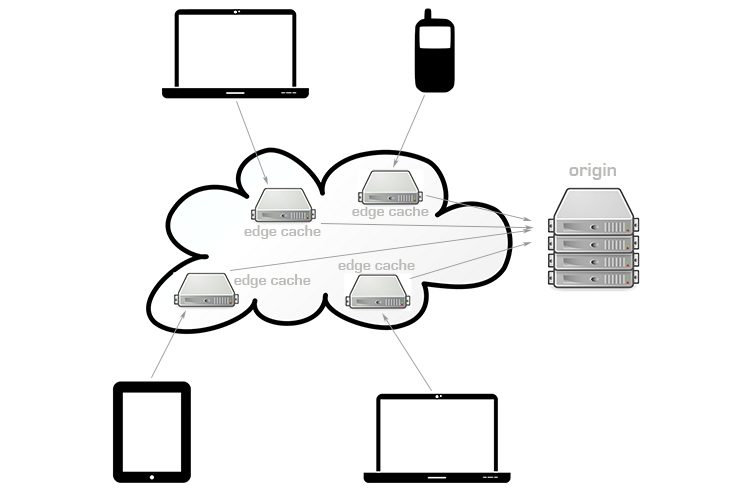
Why Isn’t My Cat Video Loading? Three Possible Causes
It’s Friday night at 8:00 PM. You are sitting at home, in your cat onesie, browsing YouTube. Then you notice that YouTube has a new recommended video for you, “Funny Cats You’ll Never Forget”. Your heart starts beating faster with excitement as you click to play the video, “This will spice up my Friday night”.
Blackness. You’ve hit the loading wheel of doom…
…still loading…
10 seconds pass.
You don’t have time for this!
“What is wrong with my Internet?!”, you lament to yourself. “I should have paid for the $50/month Internet plan instead of the $30.”
Maybe, but the issue could have a few other causes, a couple of which are out of your control. Trouble loading your cat video could be caused by any combination of three different issues: bandwidth restrictions, high demand, and video location.
1st Possible Cause of Slow Video Loading: BANDWIDTH
Bandwidth is the maximum data transfer rate of an Internet connection. Bandwidth describes how much data can be sent in a specific amount of time over your connection. For example, a gigabit Ethernet connection has a bandwidth of 1,000 Mbps, (125 megabytes per second). An Internet connection via cable modem may provide 25 Mbps of bandwidth. Basically, bandwidth describes how much data can flow through a specific connection at one time (techterms.com).
Say you live with two roommates who are streaming videos at the same time you are trying to watch the cat video, you’ll probably run into issues with playback. Each of those other videos being streamed through your single Internet connection takes up a chunk of the bandwidth promised to you by your ISP. Once it hits the limit – bye-bye cat video. You might notice this as a loss of quality (lower video bitrate) or the video just not playing at all.
Especially if there are multiple people in your household, who all love to stream video on Friday nights, upgrading your Internet may give you the wiggle room you need to have a better cat video viewing experience. For example, switching from 25Mbps to 100MBps should allow you to handle multiple streams without problems (howtogeek.com).
2nd Possible Cause of Slow Video Loading: DEMAND
YouTube has over a billion users (that’s almost 1/3 of all people on the Internet), with hundreds of millions of hours of video being watched on YouTube each day (youtube.com). If you are trying to access the newest, coolest cat video, thousands of other people are probably doing the same thing. If the servers that video is stored on are overloaded by the number of requests, then you’ll experience slow loading times. This is called latency: the amount of time it takes for the host server to receive, process, and deliver that video to you (webperformancetoday.com). There’s unfortunately not much you can do to fix this, other than accept that thousands of other people love cat videos as much as you do, and wait for the demand to taper off.
3rd Possible Cause of Slow Video Loading: LOCATION
Let’s assume your Internet connection has enough bandwidth to deliver the video, and let’s assume that this video has been around for a while, so the problem isn’t with thousands of other people requesting to watch this new, trendy video at the same exact moment, overloading the server. This might be a CDN problem.
A content delivery network or content distribution network (CDN) is a large distributed system of servers deployed in multiple data centers across the Internet. The goal of a CDN is to serve content to end-users with high availability and high performance. CDNs serve a large fraction of the Internet content today, including web objects (text, graphics and scripts), downloadable objects (media files, software, documents), applications (e-commerce, portals), live streaming media, on-demand streaming media, and social networks (wikipedia.org).

The main problem CDNs address is latency, which depends largely on how far away you are from the server that sweet cat video is on. For videos that are known to be very popular, YouTube will push them to the ‘edge’, meaning they’ll be hosted on servers in data centers all over the globe (mainly in densely populated cities) in order to decrease the distance between viewers and where the video is hosted. CDNs with more edge network deployments will serve content more efficiently (lower latency). However, when a video becomes suddenly popular, it might not be hosted widely enough to get to everyone quickly. For example, say the cat video is hosted in Reston, Virginia, and hasn’t been pushed to the edge yet. You are sitting in your cat onesie in London. In this case, your request to watch the video has to make a long round trip from London to Reston and back to London.
Again, if this is the issue, there’s not much you can do to fix it. You’ll just need to be patient and wait for “Funny Cats You’ll Never Forget” to travel from Reston to London.
To Wrap It Up
Especially if you live in a household with multiple video lovers, who like to binge-watch at the same times, checking the bandwidth of your Internet plan is worthwhile. Otherwise, the number of other YouTube users trying to watch that video at that particular time or the geographical distance between you and where that cat video is being hosted could be contributing to your frustrating Friday night. Most likely, your poor experience watching the cat video is not your fault. The best thing to do is move on to one of the other many options available. Here is a suggestion.








